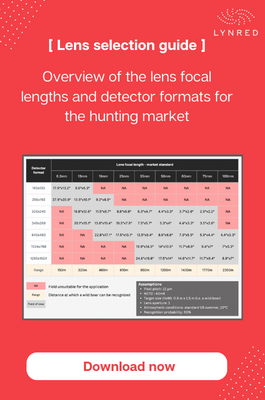please confirm your location
请确认您的位置

Wildlife observation: a potentially buoyant market for thermal imaging
September 06, 2023 . 2min read
Growth in the wildlife observation market has clearly entered the fast lane, not only in France but also worldwide. As awareness of environmental issues continues to grow, this activity is clearly gaining traction among a swelling community of enthusiasts around the world.
The market is potentially home to a fairly wide community of users and is aimed at a highly diversified group of people who are still relatively in the dark about the advantages of thermal imaging systems. Approximately 86 million people in the USA enjoy observing wildlife. That figure could be just as high in Europe, which provides an inkling of what could be a promising consumer market.
This article takes a closer look at the growth opportunities in this developing market.
- Wildlife observation: a promising growth market
Wildlife observation may be a fairly competitive segment for thermal imaging solutions, but the market harbors tremendous potential for high sales volumes. The market features a wide target audience, and the adoption rate is ultimately estimated to reach around 20%. More and more people are mindful of the environment and everything that it encompasses, especially wildlife. Many animals are mainly active at night, so enthusiasts can harness the power of thermal imaging to watch them when night falls in nearly all weather conditions.
Wildlife observation is still a relatively immature market, but that could all change as prices fall and resolutions reach higher levels. A defining feature of this market is a finished product price of less than €700. This relatively low figure can be explained by the target market of non-experts, unlike the hunting market. Having said that, consumers in the wildlife observation market are real enthusiasts, and their needs are likely to change.
This part of the leisure sector is still described as a consumer-driven segment, where uptake for new products is slower than the prosumer market, since prices are still high and users are unfamiliar with the technology and its applications. Nevertheless, studies targeting this particular sector expect revenue in the wildlife observation market to double over the next decade and potentially surge to several hundred million euros in 2030.
- How can thermal detector formats influence the wildlife observation market?
According to estimates, the wildlife observation market will capture even greater attention when imager resolutions achieve the QVGA format. Today's market contains products with resolutions less than 320 x 240 pixels (160 x 120 or 206 x 156 formats), and this format is quick to show its limitations for this type of activity.
Nevertheless, these thermal imaging detectors are capable of visualizing highly contrasted images, meaning that users can very clearly pick out an animal's profile both during the day and at night when camouflaged in its natural environment.
Market growth will happen when resolutions are scaled up to the QVGA format, pixel pitches are reduced and costs are lowered with the advent of products offering higher resolutions in the premium segments and higher sales volumes.
The annual growth rate is expected to average 20% between 2026 and 2031, which heralds an enticing market opportunity just waiting to be tapped into.
A review of the business environment reveals that the wildlife observation market holds plenty of promise with a large target audience of enthusiastic users who are gradually shrugging off their geek label to become true consumers.
If you would like to find out more about the leisure market in general and specifically the technical characteristics of the imaging systems for each market segment, then download the free selection guide below.



